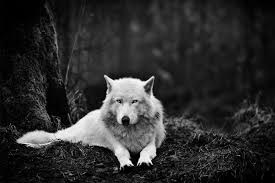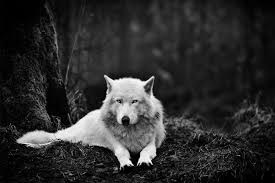TGC – Zoology: Understanding the Animal World
$236.00 Original price was: $236.00.$49.40Current price is: $49.40.
For young and old alike, zoos are one of the most popular places to visit. Each year, over 185 million people visit accredited zoos and aquariums throughout the United States for close encounters with some of the most adorable, exotic, and strange animals on our planet.
File size: 11.93 GB
(m4v)
TGC – Zoology: Understanding the Animal World
For young and old alike, zoos are one of the most popular places to visit. Each year, over 185 million people visit accredited zoos and aquariums throughout the United States for close encounters with some of the most adorable, exotic, and strange animals on our planet.
Chief among these zoos is the Smithsonian’s National Zoo and Conservation Biology Institute. Theoverarching goal of this remarkable modern zoo is to educate everyday people about the astonishing range of animal species: how they live, how they develop, and how they impact the world. Thousands flock to this beautiful zoo every day to visit animals they’ve never before seen and, often, never knew existed.
Helping the average visitor navigate this exciting world are zoologists, the hard-working scientists whose research in areas like animal intelligence, ecology, behavior, and conservation are helping us make better sense of the animal world, from mosquitos and monarch butterflies to polar bears and great white sharks. Much of what we know—and are currently learning—about animals is thanks to the scientific field of zoology.
As much as we love an informative trip to the zoo, the truth is that you can’t learn everything there is to know about animals with the occasional visit. But by exploring zoology and the tireless work of zoologists at the Smithsonian’s National Zoo—and other zoological parks and aquariums across the country—you’ll find your next trip to the zoo more rewarding, more enriching, and much more satisfying.
In Zoology: Understanding the Animal World, The Great Courses teams up with the Smithsonian, the acknowledged leader in animal research, conservation, and education, to bring you 24 visually rich lectures that take you behind the scenes of not only the animal world but of the scientists trying to understand how it works. Dr. Donald E. Moore III—director of the Oregon Zoo and senior science advisor at the Smithsonian’s National Zoo—has crafted a wonderful introduction to the fundamentals of zoology through the eyes of a trained zoologist, bringing you up close and personal with a breathtaking variety of animal species: crocodiles, birds of prey, lions, dolphins, giant pandas, elephants, and more. Packed with exclusive footage from zoos, research parks, and animals in their natural habitats, as well as interviews with other Smithsonian scientists, these lectures will reveal the hidden world of animals in a way no textbook could ever hope to do.
Learn What Zoologists Do
According to Professor Moore, zoologists do a lot more than tend animals for the zoo.
“Modern zoological research is discovering subtle but important differences between species that aren’t necessarily apparent to the naked eye,” he says at the start of Zoology. “While most of the time, the public sees a zoo as an entertaining and educational way to spend a Saturday afternoon (and it very much is), your average accredited zoo is also a vital part of research and conservation activities going on across the world.”
To make this scientific field a little more manageable to grasp, and to guide your learning in a way that builds upon insights, Professor Moore has organized the lectures into three general sections.
Start with the basics of zoology. Topics include the intriguing relationship between genetics and environment, sexual behaviors in different animal groups, parenting styles and their evolutionary importance, and the role conservation plays in our current research into the animal kingdom.
- Dive into the different orders of life on our planet. It’s a colorful tour that takes you from the ocean depths to the highest tree tops and reveals the characteristics of different animal orders (invertebrates, amphibians, reptiles, fish, mammals) as well as the astounding diversity within them.
- Investigate special subjects intriguing today’s zoologists. How do animals interact with their environments and with one another (including human beings)? How do we study animal intelligence, and can animals think? What diseases threaten animals in the wild and in zoos? How can we ensure the survival of endangered species?
Meet Incredible Animals
Of course, the most fascinating part of Zoology: the animals themselves. Each of Professor Moore’s lectures features some of most incredible animals on Earth. And thanks to the special footage from the Smithsonian’s National Zoo and others, you’ll be able to see these and other animals in action—without the crowds. Not only this, but you will see exclusive behind-the-scenes footage only available in this course, including a sneak peek at a baby giant panda filmed months before the first public viewing. Just a few of the animals you will meet include:
Golden lion tamarins. One of the most amazing examples of unique parental care in mammals, golden lion tamarin family groups benefit from sub-adult helpers that act as “teenager” babysitters. This behavior also helps these “teenagers” become better parents when they have babies of their own.
- Corals. Important ocean resources, corals are the basis of an entire ecosystem—and they’re also a resource to human beings. Home to worms, conchs, spiny lobsters, fish, and more, the world’s vibrant and multi-colored coral reefs surpass even tropical rainforests in their levels of biodiversity.
- Crocodiles. Unlike most other non-avian reptiles, crocodiles provide extensive maternal care. A mother crocodile can hear the vocalizations from her hatching young and will actually open the nest to help them emerge more easily. She’ll then guard her young for up to two years after hatching.
- Giant Pandas. Normally, zoologists expect an animal’s diet to reflect its physiology, and vice versa. Not so with giant pandas, which are one of the most inefficient feeders on the planet. These animals have the physiology of a carnivore, but they eat a diet made almost entirely of tough, woody bamboo.
- Mosquitos. The lowly mosquito is considered the deadliest animal on Earth. According to research by the World Health Organization, mosquitos spread diseases—such as malaria, West Nile virus, yellow fever, and dengue fever—that kill more than 2.5 million people each year.
You’ll also learn a host of other interesting facts about what zoologists now know of animal life. Did you know that biological outcomes like the average time until reproduction all scale to body mass? So, for example, a half-ounce mouse can have five or 10 litters of babies each year, while a five-ton elephant can only have one baby every five or so years.
In fact, you may be surprised to discover some things you thought you knew. Many people believe birds live in nests, however, this is mostly a myth. A bird creates a nest solely for the purpose of laying and hatching eggs. A larger, more ornate structure called a bower is designed to attract a mate for the unique bower birds (the avian equivalent of flowers and chocolate).
And what can learning about other animals tell us about humans? Well, for one thing human beings have one of the most dilute milks of all mammals, with low percentages of milk proteins and fat. In fact, dairy cow milk is fairly similar to our own, which is probably one of the reasons many of us can digest it. These are just a few of the amazing things zoology has to teach us.
Can’t-Miss Footage and Interviews
Dr. Moore has spent nearly 40 years as a zoo director and conservation biologist interacting with a plethora of animals. He brings these decades of experience in—and passion for—the animal kingdom to every lecture in Zoology.
Along with the animals and the exclusive, can’t-miss footage of zoo life, this course also takes you inside laboratories and research centers for interviews with other Smithsonian scientists. Their stories and insights will add additional layers to your understanding of cheetahs, pollinators, species conservation, and so much more.
It’s a wide, wild world out there. And with this engaging and informative series, you’ll be better equipped to get out there and discover the wonders that live in it, whether they’re in your local zoo, aquarium, a national park, or right in your own backyard.
-
1What Do Zoologists Do?
-
2Animal Reproduction: Genes and Environment
-
3Mammal Reproduction: Pandas and Cheetahs
-
4How Animals Raise Their Young
-
5Helpful Corals, Clams, and Crustaceans
-
6Bees, Butterflies, and Saving Biodiversity
-
7Deadly Invertebrates: Vectors and Parasites
-
8Bony Fish, Skates, Sharks, and Rays
-
9Amphibians, Metamorphosis, and Ecology
-
10Reptiles: Adaptations for Living on Land
-
11Beaks, Claws, and Eating like a Bird
-
12Form and Function: Bird Nests and Eggs
-
13Taking to the Sky: Bird Migration
-
14What Makes a Mammal: Hair, Milk, and Teeth
-
15Herbivore Mammals: Ruminants and Runners
-
16Carnivore Mammals: Feline, Canine, and Ursine
-
17Primate Mammals: Diverse Forest Dwellers
-
18Size, Structure, and Metabolism
-
19Protection, Support, and Homeostasis
-
20Animal Energetics and the Giant Panda Problem
-
21Ethology: Studying Animal Behavior
-
22Think! How Intelligent Are Animals?
-
23Combating Disease in the Animal Kingdom
-
24 Animal Futures: Frontiers in Zoology
Be the first to review “TGC – Zoology: Understanding the Animal World” Cancel reply
Related products
Other Courses
Other Courses
Other Courses
Other Courses
Other Courses
Other Courses
Other Courses













Reviews
There are no reviews yet.